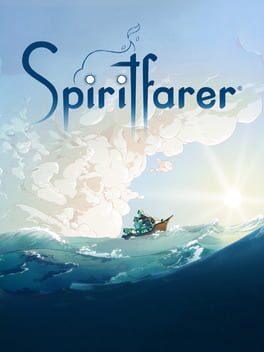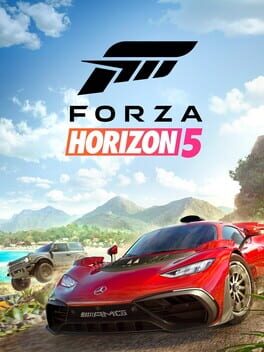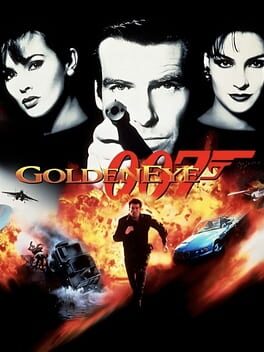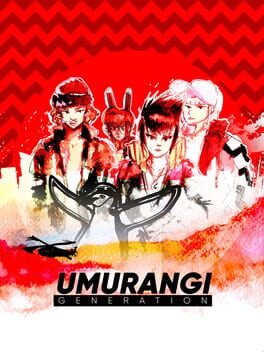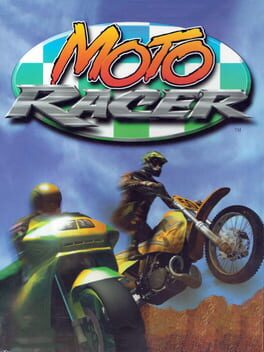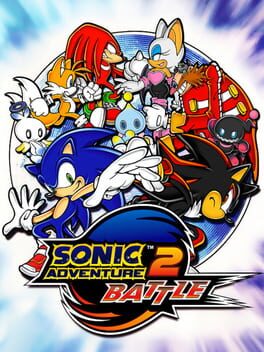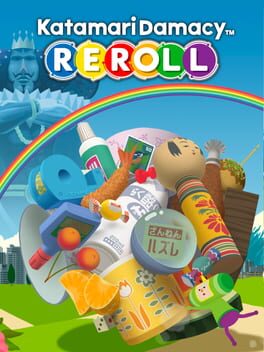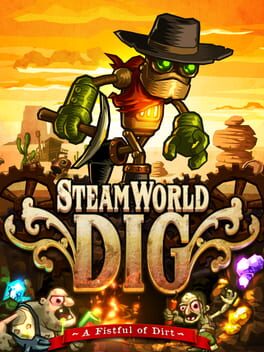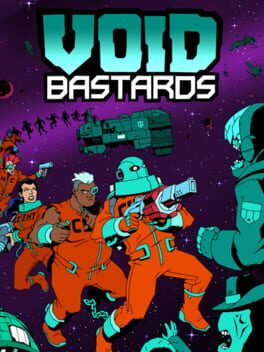Krombopulos_MK
2022
You know, I was having a good time. Then it turned out that Justin Roiland is a horrific sack of crap, so I think I’m good.
https://www.nbcnews.com/tech/internet/justin-roiland-rick-morty-allegations-domestic-violence-charges-rcna65403
https://www.nbcnews.com/tech/internet/justin-roiland-rick-morty-allegations-domestic-violence-charges-rcna65403
2020
If there is a game for our time, this is it. Through the efforts of standout writing and the sum of the repetitious actions you undertake, Spiritfarer will usher you into a rhythm that viscerally contemplates the mortality of humanity and the lives we live. Every aspect and mechanic is in service to this goal. Even when specific parts of the game, if isolated, seem under-baked, they often still build to inspired moments.
The knock against it is found in those lacking elements. The handling in the platforming sections are far too loose and unexciting, the clicker/base building aspects can become tedious and don’t progress enough in and of themselves, and the endgame, if the player indulges in it, is effectively an amalgamation of all the worst parts divorced from the game’s guiding thesis.
However, when you hit the seas, exploring the secrets of the map and its islands with the transcendent score accompanying you, scurrying to finish projects on the boat during the voyage, all the while building relationships with your passengers, it all comes together to make a wonderful miniature ecosystem that is simply hard to put down.
Make time for Spiritfarer. It will surprise you and pull you in. And you won’t be able to leave unaffected.
The knock against it is found in those lacking elements. The handling in the platforming sections are far too loose and unexciting, the clicker/base building aspects can become tedious and don’t progress enough in and of themselves, and the endgame, if the player indulges in it, is effectively an amalgamation of all the worst parts divorced from the game’s guiding thesis.
However, when you hit the seas, exploring the secrets of the map and its islands with the transcendent score accompanying you, scurrying to finish projects on the boat during the voyage, all the while building relationships with your passengers, it all comes together to make a wonderful miniature ecosystem that is simply hard to put down.
Make time for Spiritfarer. It will surprise you and pull you in. And you won’t be able to leave unaffected.
2002
I am endeared to Ratchet & Clank due, in part, to how unrefined it is. There are a lot of rough edges, but for every oversight that would be later addressed, there is an oddity that is interesting. It’s a platformer with a ton of tools (some of which you hardly use) at your disposal instead of being a shooter first. The levels are linear paths, but branch in a Metroid lite sort of way, with rewards ranging from optional tools to currency that won’t be useful until you restart the game.
But perhaps the most interesting quirk is the premise itself. You follow a smack talking dick of a platform mascot as he reluctantly resists a corporation whose greed threatens the entire galaxy. Satires of capitalism, corporations, marketing, and hero worship abound as Ratchet and Clank travel together and eventually find common ground.
Unfortunately, throughout the course of the series, these interesting twists were sanded off as though they were rough edges, culminating in the absolutely soulless husk that was the 2016 movie tie in reboot of this game.
Perhaps this is why I’m so fond of the original. Beyond its bop of a soundtrack and lively art style, it is the kind of game that focus testing and years of formalizing the practice of game making have made practically extinct within the AAA space.
It’s not all rose colored glasses, Ratchet & Clank did have significant oversights in design that needed to be addressed. But at least it was trying a bunch of fun ideas and had something to say instead of trying to be dollar store Pixar.
But perhaps the most interesting quirk is the premise itself. You follow a smack talking dick of a platform mascot as he reluctantly resists a corporation whose greed threatens the entire galaxy. Satires of capitalism, corporations, marketing, and hero worship abound as Ratchet and Clank travel together and eventually find common ground.
Unfortunately, throughout the course of the series, these interesting twists were sanded off as though they were rough edges, culminating in the absolutely soulless husk that was the 2016 movie tie in reboot of this game.
Perhaps this is why I’m so fond of the original. Beyond its bop of a soundtrack and lively art style, it is the kind of game that focus testing and years of formalizing the practice of game making have made practically extinct within the AAA space.
It’s not all rose colored glasses, Ratchet & Clank did have significant oversights in design that needed to be addressed. But at least it was trying a bunch of fun ideas and had something to say instead of trying to be dollar store Pixar.
2021
The Horizon series is comfort food. They are the omelette of video games, never the best meal that you have ever had, but consistently good, sometimes even great, and endlessly customizable to suit your taste. Hate onions? Leave them off! Don’t like drift challenges? You never have to touch them! Here’s a bottle of Sriracha and a difficulty slider so you can incrementally decide the challenge for tonight. No matter your preferences, there is probably a configuration you can find to like.
Horizon 5 follows in this tried and true and growing tired formula with noticeable, but modest, improvements. Visuals have taken a leap. Mexico is more interesting than Great Britain. And everything that has been fun in the past is just as (if not more) fun now.
But 5 hasn’t perfected the formula. Choosing between quality and performance modes feels like a legitimate lose/lose. There is still no meaningful progression path in the game. And the tone of the writing still makes Steve Buscemi dressed as a 14 year old seem positively on the pulse of culture.
However, perhaps the hardest part of the game to critique is the nagging feeling that it is just more of the same. Because while that might be somewhat true, no one else seems to have a better idea. Since the first Horizon game in 2012, no one has come close to Playground’s crown and hold over the open world/sandbox racing game.
Because the omelette is still really good! Driving fast, flying off a mountain, and juicing cars is good, dumb fun. It’s just that maybe the kitchen should try their hand at Eggs Benedict next time. But until then come on over, take a load off, and enjoy some comfort food.
Horizon 5 follows in this tried and true and growing tired formula with noticeable, but modest, improvements. Visuals have taken a leap. Mexico is more interesting than Great Britain. And everything that has been fun in the past is just as (if not more) fun now.
But 5 hasn’t perfected the formula. Choosing between quality and performance modes feels like a legitimate lose/lose. There is still no meaningful progression path in the game. And the tone of the writing still makes Steve Buscemi dressed as a 14 year old seem positively on the pulse of culture.
However, perhaps the hardest part of the game to critique is the nagging feeling that it is just more of the same. Because while that might be somewhat true, no one else seems to have a better idea. Since the first Horizon game in 2012, no one has come close to Playground’s crown and hold over the open world/sandbox racing game.
Because the omelette is still really good! Driving fast, flying off a mountain, and juicing cars is good, dumb fun. It’s just that maybe the kitchen should try their hand at Eggs Benedict next time. But until then come on over, take a load off, and enjoy some comfort food.
1994
In the year of our lord, 2021, Super Metroid is still a great game. While its progeny may have refined its systems and controls, Super Metroid continues to be the most fleshed out (2d, sprite based) game in the series. Its atmosphere and aesthetic, especially early on, is impeccable as it retraces steps from the previous game and ultimately branches out into areas yet unseen. Its sense of exploration draws the player in and its secrets, when found, are delightful. It even remains, for the most part, responsive and fun to control.
There are aspects, however, that hold Super back and potentially show its age. A couple of the power ups, a grappling hook and the ability to muli-jump, are truly frustrating to use and the way to select between power ups is archaic. Further, some obstacles the player runs into, specifically the quicksand, are unnecessarily frustrating to encounter and unclear how to combat. This, unfortunately, drags an entire new part of Zebes down into a momentum killing mire. Super’s most egregious problem, unfortunately, is the level of obtuseness that it commits to near the end. The strength of its exploration rapidly becomes a chore when running in circles trying to guess what the game could possibly want from you.
However, even through these negative aspects, it is easy for players to see how Super Metroid kicked off its own genre and how it continues to be considered among the best that it has to offer. Perhaps consider playing it, though, with a guide easily accessed and on a platform with save states (like the Switch) to help shave off a few of the rough edges.
There are aspects, however, that hold Super back and potentially show its age. A couple of the power ups, a grappling hook and the ability to muli-jump, are truly frustrating to use and the way to select between power ups is archaic. Further, some obstacles the player runs into, specifically the quicksand, are unnecessarily frustrating to encounter and unclear how to combat. This, unfortunately, drags an entire new part of Zebes down into a momentum killing mire. Super’s most egregious problem, unfortunately, is the level of obtuseness that it commits to near the end. The strength of its exploration rapidly becomes a chore when running in circles trying to guess what the game could possibly want from you.
However, even through these negative aspects, it is easy for players to see how Super Metroid kicked off its own genre and how it continues to be considered among the best that it has to offer. Perhaps consider playing it, though, with a guide easily accessed and on a platform with save states (like the Switch) to help shave off a few of the rough edges.
2023
I assumed I would just play up through Facility as I have done countless times, but then I ended up running through Goldeneye again. And it turns out, when unshackled from archaic controls, it’s pretty dang fun! Poking around finding all the little things you need to do in a level is rewarding but mercifully brief. And there is something really charming seeing how, with such restrained resources, Rare set a delightful Bond atmosphere.
Sure, it gets up to its retro game BS by the end with some pretty frustrating encounters, but again, the levels are short and eventually you find ways to break those moments.
Goldeneye is, however, impossible for me to score at this point. The guns, maps, music, UI, everything really is dripping with nostalgia for me. What I will say is that if you have played Goldeneye before, this port may not give it a fresh cost of paint, but it does give the opportunity to play it as you remember it and not as it was with better controls, resolution, and performance. And even if you are new to it, I think there is something kind of special to experience here.
Edit: Also, I never realized that the cheats came from speed-running levels and that has really hooked me as an endgame. It turns how I played the levels on their head and nudges you towards how to break the game. It’s a super cool, whole new way to play that is rewarded with neat cheats.
For a game that was rushed to ship in 1997, it is pretty remarkable what Goldeneye managed to achieve.
Sure, it gets up to its retro game BS by the end with some pretty frustrating encounters, but again, the levels are short and eventually you find ways to break those moments.
Goldeneye is, however, impossible for me to score at this point. The guns, maps, music, UI, everything really is dripping with nostalgia for me. What I will say is that if you have played Goldeneye before, this port may not give it a fresh cost of paint, but it does give the opportunity to play it as you remember it and not as it was with better controls, resolution, and performance. And even if you are new to it, I think there is something kind of special to experience here.
Edit: Also, I never realized that the cheats came from speed-running levels and that has really hooked me as an endgame. It turns how I played the levels on their head and nudges you towards how to break the game. It’s a super cool, whole new way to play that is rewarded with neat cheats.
For a game that was rushed to ship in 1997, it is pretty remarkable what Goldeneye managed to achieve.
2022
Very few games offer such varied paths to legitimate and distinct ends as Citizen Sleeper does. While we all will potentially find the same characters and storylines, the way we encounter them, in a unique pressure cooker of obligations that is always threatening to burst, makes those beats take on different meanings depending on how you found them.
Someone screwing you over when you are starving or stocked gives a different vibe. Finding a string of schmucks or benevolence leads to different perspectives on the state of the station. All while the timers tick down and force you to focus on a few objectives at a time.
What is so impressive is that this dynamic leads Citizen Sleeper to supporting a variety of reads and endings legitimately supported by those experiences. There are not really “bad” endings, but instead endings that support the range of places people can come to while playing. And that is a feat worth appreciating.
Someone screwing you over when you are starving or stocked gives a different vibe. Finding a string of schmucks or benevolence leads to different perspectives on the state of the station. All while the timers tick down and force you to focus on a few objectives at a time.
What is so impressive is that this dynamic leads Citizen Sleeper to supporting a variety of reads and endings legitimately supported by those experiences. There are not really “bad” endings, but instead endings that support the range of places people can come to while playing. And that is a feat worth appreciating.
I wasn’t sold on Umurangi Generation until the very end when the full arc of its narrative and themes came into view. Up until that point, the game’s interesting world and unique way of exploring it (primarily through photography) had been somewhat hamstrung by clunky controls, counterproductive objectives, and a practically unparsable scoring system for the pictures you take.
But by the last run of stages (which were originally and surprisingly DLC), the game itself provided ways or I had found ways to work around these short comings. All the while, the scenes you walk in on escalate to an unforgettable ending.
So Umurangi Generation is far from perfect, but it drags itself far closer by the end. It definitely is a game in which player’s mileage will vary, in this case depending upon if you love to take pictures or not. But, regardless of your interest in photography, this game goes places you will want to see.
But by the last run of stages (which were originally and surprisingly DLC), the game itself provided ways or I had found ways to work around these short comings. All the while, the scenes you walk in on escalate to an unforgettable ending.
So Umurangi Generation is far from perfect, but it drags itself far closer by the end. It definitely is a game in which player’s mileage will vary, in this case depending upon if you love to take pictures or not. But, regardless of your interest in photography, this game goes places you will want to see.
I'm kind of at a loss for words with this one. At times excruciatingly slow, at others utterly captivating. Always mesmerizingly beautiful, subtly unsettling, and thematically dense. All written with characters and scenes worthy of a Pulitzer.
I found myself initially pulled in by questions about the nature of the world. What was real? What was happening? But eventually, Kentucky Route Zero gently pushes modernistic exploration aside and instead focuses on its themes and how the characters interact with them. The world that surrounds them is simply filled with icons that lend emotional resonance to its themes.
But by engaging with it on its own terms, Kentucky Route Zero is affecting. Absolutely thought-provoking and haunting. And has earned a place at the table alongside the other works of classic Americana.
I found myself initially pulled in by questions about the nature of the world. What was real? What was happening? But eventually, Kentucky Route Zero gently pushes modernistic exploration aside and instead focuses on its themes and how the characters interact with them. The world that surrounds them is simply filled with icons that lend emotional resonance to its themes.
But by engaging with it on its own terms, Kentucky Route Zero is affecting. Absolutely thought-provoking and haunting. And has earned a place at the table alongside the other works of classic Americana.
1997
I remember playing this as a demo disc that came with an old Compaq tower and loving it. Imagine my surprise to find out that not only does it have several more maps, but also holds up as a slim, but pretty delightful arcade racer.
I don’t know if it is my nostalgia, but Moto just has a vibe. From the tracks to the music to the way the engines rev, it has a pretty distinct identity. And a fun one at that, spanning both the street and dirt races.
One of the dirt races is across the top of the Great Wall of China. Enough said.
I don’t know if it is my nostalgia, but Moto just has a vibe. From the tracks to the music to the way the engines rev, it has a pretty distinct identity. And a fun one at that, spanning both the street and dirt races.
One of the dirt races is across the top of the Great Wall of China. Enough said.
After 15 years, I have been surprised at how enjoyable I found Sonic Adventure 2 to still be. It struck me this time just how much the soundtrack slaps and elevates the experience. I totally understand the criticism it receives. The first half of the game ranges from top tier to perfectly fine, butthe later levels really punish the player for the mechanical or level design jank. But it’s easy to ignore those levels and just grind the great ones for Chao stuff.
The Chao garden is the single greatest replay motivator that I’ve ever found. Still is today. It, combined with levels that can be run in three minutes, is an absolutely addictive loop. Neither the main levels nor the Chao garden would work as well without the other. Coming back to it, I was floored by what a genius system it is to make Sonic games have a longer tail.
Last retrospective thought, I think the mech and collectathon levels are fine in theory and help pace the game. There are just some really bad ones (the timed vault one) and their mechanics need tweaking (multiple item tracking).
The Chao garden is the single greatest replay motivator that I’ve ever found. Still is today. It, combined with levels that can be run in three minutes, is an absolutely addictive loop. Neither the main levels nor the Chao garden would work as well without the other. Coming back to it, I was floored by what a genius system it is to make Sonic games have a longer tail.
Last retrospective thought, I think the mech and collectathon levels are fine in theory and help pace the game. There are just some really bad ones (the timed vault one) and their mechanics need tweaking (multiple item tracking).
Katamari Damacy’s unmatched style and core idea carry the experience through rough tank controls and wonky physics. From the crazy opening cutscene with a theme song that will borrow deep within your mind, it is clear that Katamari is something special and one of a kind. The joyous and earworm music set the perfect tone, the art style looks vibrant and utterly unique as it scales, and the core activity (in concept) of rolling up the world into a ball is a delight. It just has to be seen.
Unfortunately, in order to see it, you’ll have to suffer through tank controls that have no place in the year of our lord 2021. Even by the end, your Katamari can feel not quite under control. Pair this lack of control with occasional physics wonkiness, like getting battered around by multiple cars then tossed off a cliff, and the delightful game can get a bit frustrating.
But even so, Katamari is definitely still worth seeing. Rarely is there a game that is so entirely its own thing. And pretty much guaranteed to make you smile.
Unfortunately, in order to see it, you’ll have to suffer through tank controls that have no place in the year of our lord 2021. Even by the end, your Katamari can feel not quite under control. Pair this lack of control with occasional physics wonkiness, like getting battered around by multiple cars then tossed off a cliff, and the delightful game can get a bit frustrating.
But even so, Katamari is definitely still worth seeing. Rarely is there a game that is so entirely its own thing. And pretty much guaranteed to make you smile.
2017
2013
2019
Even though the content of Void Bastards quickly runs thin, an expertly crafted loop and eye catching aesthetic is enough to make players invested in the galactic journey. Everything in Void Bastards revolves around your decisions and risk mitigation. Do you need food, fuel, resources, or upgrade parts enough to engage with the threats on each ship? Are you out of options and have to take on an unfavorably rolled ship anyway? These are the questions players face every turn, with consequences for those decisions perhaps appearing as soon as the next ship. Even on the ships themselves, players have to constantly weigh whether continued looting is worth the hit to their health or ammo.
Yet, when decisions do go sideways, Void Bastards is forgiving. Upon death, players retain all item upgrades and materials and are placed only a few ships back from the next objective. It may hurt to loose a character with great perks and a mound of food or ammo, but it is relatively frictionless to start again know each run has made progress.
Which is a blessing since the game’s RNG can birth ships with wacky attributes that are truly fun and some that are complete BS. Runs can be ruined by a bad succession of RNG. Further, the game itself, while delightful with its cell-shaded art, almost immediately starts becoming repetitious in its use of art assets, locations, and gameplay encounters.
Thus, it is necessary that Void Bastards keeps the pace that it does. Its risk/reward tension never ceases to be engaging and overall the game’s duration doesn’t outstay its welcome. It’s not for everyone, but there is fun to be had for those that enjoy this decision making loop and seeing the games systems interact in surprising ways.
Yet, when decisions do go sideways, Void Bastards is forgiving. Upon death, players retain all item upgrades and materials and are placed only a few ships back from the next objective. It may hurt to loose a character with great perks and a mound of food or ammo, but it is relatively frictionless to start again know each run has made progress.
Which is a blessing since the game’s RNG can birth ships with wacky attributes that are truly fun and some that are complete BS. Runs can be ruined by a bad succession of RNG. Further, the game itself, while delightful with its cell-shaded art, almost immediately starts becoming repetitious in its use of art assets, locations, and gameplay encounters.
Thus, it is necessary that Void Bastards keeps the pace that it does. Its risk/reward tension never ceases to be engaging and overall the game’s duration doesn’t outstay its welcome. It’s not for everyone, but there is fun to be had for those that enjoy this decision making loop and seeing the games systems interact in surprising ways.

